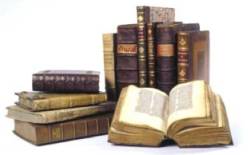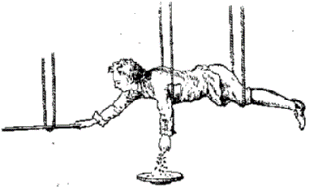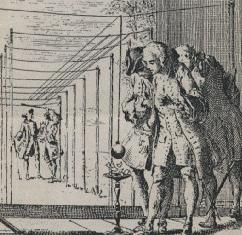Categories: Featured Articles » Interesting Facts
Number of views: 12363
Comments on the article: 0
How was the opening
 A serious scientific experiment is chaotic, like war. The researcher often does not understand what is happening. The data obtained, as well as information from front-line intelligence, are usually contradictory. Further experiments have to be carried out “by touch” to obtain new facts. But in the end, the picture becomes clearer and then the “backdating” experimenter in the report describes a clear and precise sequence of his steps towards the goal, without mentioning the wrong ones. The main results of the experiments quite often lie not where the scientist was striving. However, the progress report looks like a triumphal procession from one truth to another, whether he wants it or not. Unfortunately, historians of science later work with such materials, which of course affects the quality of their work.
A serious scientific experiment is chaotic, like war. The researcher often does not understand what is happening. The data obtained, as well as information from front-line intelligence, are usually contradictory. Further experiments have to be carried out “by touch” to obtain new facts. But in the end, the picture becomes clearer and then the “backdating” experimenter in the report describes a clear and precise sequence of his steps towards the goal, without mentioning the wrong ones. The main results of the experiments quite often lie not where the scientist was striving. However, the progress report looks like a triumphal procession from one truth to another, whether he wants it or not. Unfortunately, historians of science later work with such materials, which of course affects the quality of their work.
I would like to recall the story of one discovery that happened almost three centuries ago, which is now considered quite natural and taken for granted. Its authors are almost forgotten, but its significance for physics is no less than the voyage of Columbus to geography. It will be about the emergence of electrical conductors, as an indispensable attribute of the electrical circuit and the technical ability to transfer energy to a distance, which revolutionized the industrial development and arrangement of human life.
The reason for the appearance of this work was the desire to bridge the gaps in the materials on this topic in Russian in the history of physics and electrical engineering. It would be very instructive for current electricians to know the beginning of the path that science has traveled in this direction.
The beginning of the XYIII century, England. The great president of the English Academy of Sciences, the Royal Society of London, is the great Isaac Newton. He is already completing his fundamental work, Optics, and of course he is interested in all issues related to the propagation, reflection, refraction of light, and their sources. He could not ignore the question that European scholars had been trying to solve for several decades. Back in 1675. The French astronomer J. Picard, carrying a mercury barometer at night, noticed mysterious lights in the torricellium emptiness of the tube. No rational explanation was given to this phenomenon by anyone. We settled on the hypothesis of the electrical cause of this radiance. But what was the information about electricity at that time?
From ancient times it was known that some grated bodies acquire the property of attracting light objects to themselves. In 1600, it was proved that electrical attraction is different from magnetic. In 1660, the property of repulsion of bodies from electrified bodies was demonstrated. An electric spark was obtained in 1700. from grated amber. That's probably all. But the spark was the source of light, and Newton ordered the experiments to be conducted by the curator of the Society, Francis Gauksby. A hollow glass ball with removed air from the inside was untwisted on a special machine using a belt drive. When rubbing it with his hands, his vacuum glowed so brightly that in the dark you could read a book. Sparks could be obtained from the ball. He also attracted and repelled bodies. It was essentially the first electric car.
However, this machine did not receive distribution and was soon forgotten. The reason was commonplace - it cost the owner dearly. Science at that time was not subsidized by the government. Now this will seem strange, but even the members of the Royal Society of London, that is, academics by our notions, not only did not receive any salary, but the Society itself existed at the expense of the contributions of its members and constantly needed money. And the materials necessary for the experiments were bought at his own expense by the experimenter.To receive the charges, even at home, Gauksby invited scientists to simply rub a thick-walled glass tube with cloth. This proposal was so successful that thousands of people of scientists and craftsmen, clergy and aristocrats, magicians and crooks began to extract electric charges.
It was with this glass tube that mass discoveries and inventions in the field of electricity began. No one even raised the question of the practical application of new phenomena. It is this circumstance that has served and still is now the cause of ridicule and accusations of scientists in research in the opinion of the inhabitants of worthless phenomena. In the period described by us, the famous English writer Jonathan Swift wrote a sharp satire on the English society of his time - "Gulliver's Travels". However, all the problems solved in the book by scientists, previously considered ridiculous, now do not seem so. Even "Turning human excrement into nutrients." Therefore, experimental science in the eyes of the common people was a rare phenomenon. But ascetics have always been.
A certain dyer of fabrics in Canterbury (near London) Stephen Gray (1666-1736) became interested in science. Information about his education is not known, most likely he was self-taught. His grandfathers were - one blacksmith, another carpenter, he himself inherited the craft of his father. The profession was not profitable, which follows from his letters, where the author complains about the lack of money "on books, tools and other materials." Nevertheless, he became interested in observing the weather and astronomy. It was not easy to become an astronomer in those days. It was necessary to make a telescope by hand, manually polishing the porthole lenses. So he began to get acquainted with optics. By the way, a telescope made by I. Newton’s hands is still stored in London.
Gray's first scientific work was published in 1698, where he described the possibility of increasing the accuracy of barometer readings by observing them through a microscope. The work was noticed by the Royal Astronomer John Flamstead himself, the founder of the Greenwich Observatory, who began to patronize the budding scientist.
Apparently not without his assistance, in 1919 Gray was arranged as a pensioner of the Charterhouse with full provision so that he could not think about a daily piece, but devote himself entirely to science. This was not easy at all, for the Charterhouse charity, founded by monks in the XYII century, was intended for unmarried men of the Anglican faith, mostly retired captains. Here the studies of interest to us unfold.
First, Gray electrifies various bodies with friction (silk threads, leather, wood, wool), achieving such a large electrification that pieces of paper and feathers began to be attracted to them from a distance of 2-5 cm. Even better results were obtained by rubbing a glass tube. But for Gray this is not enough. He wonders if electrification performance will improve if the glass tube is plugged. To his chagrin, the degree of electrification has not changed. But he was an observant man, which is very important for a scientist, and drew attention to the fact of sticking pieces of paper to traffic jams. That was great news. After all, at that time only one method of electrifying bodies was known - rubbing them. But nobody rubbed the cork! So a new way was discovered to ELECTRIZE BODIES BY USING THE CONTACT OF AN UNCHARGED BODY WITH AN ELECTRIZED.
 Further events are described by the experimenter himself. “I took up the research,” he writes, “how far electric power is transmitted. To do this, I took a hollow cane 2 feet long 7 inches (80 cm), the former part of the fishing rod and inserted into the hole of the glass tube. After the tube was energized, the cane attracted the foil, as did the ivory ball, which I attached with a cork to the cane. Then I took the two upper ends of the long fishing rods.One of them was from Spanish cane, the other was partly made of wood and partly made of whalebone. All this together with the tube was more than 14 feet long (More than 4 meters) A ball was attached to the end of the whalebone. After the tube was excited, the ball attracted the foil from a distance of 3 inches. I made a rod from Spanish cane and pine boards, which, together with the pipe, exceeded 18 feet (5.5 m.). This length was the limit with which I could operate in my room, and found that the attraction was just as strong. "
Further events are described by the experimenter himself. “I took up the research,” he writes, “how far electric power is transmitted. To do this, I took a hollow cane 2 feet long 7 inches (80 cm), the former part of the fishing rod and inserted into the hole of the glass tube. After the tube was energized, the cane attracted the foil, as did the ivory ball, which I attached with a cork to the cane. Then I took the two upper ends of the long fishing rods.One of them was from Spanish cane, the other was partly made of wood and partly made of whalebone. All this together with the tube was more than 14 feet long (More than 4 meters) A ball was attached to the end of the whalebone. After the tube was excited, the ball attracted the foil from a distance of 3 inches. I made a rod from Spanish cane and pine boards, which, together with the pipe, exceeded 18 feet (5.5 m.). This length was the limit with which I could operate in my room, and found that the attraction was just as strong. "
To continue the experiments, it was necessary to go out and in addition to look for an assistant. So enthusiast was the priest Grenville Wheeler. He turned out to be also a smart person. In May 1729, Gray conducted a successful experiment, standing on the balcony. At the same time, a linen cord 8 meters long, corresponding to the height of the balcony, hung from a glass tube. At the bottom was Wheeler, which determined the charge with the help of a brass sheet on a plank.
Next, the researchers decided to try to transfer electricity horizontally. For this, a linen cord was hung on nails driven into wooden beams. Alas, the experience failed. After much deliberation, Gray draws the generally correct conclusion that the electricity went into the beam. Wheeler's turn is to enter history. He suggests hanging the cord with silk laces. At 10 a.m. 1729 for the first time in history, a charge came to a destination via a power line (an ivory ball). The distance at which the charge was transferred was about 25 meters. In terms of electrical properties, linen and silk were different.
Replacing silk garters with wires, the experimenters again got a negative result. It became clear that the success of the experiment is due to the property of silk not to conduct electricity. Hair ropes had the same property. A former dyer familiar with fabrics, having tried several silk laces, came to the conclusion that blue laces have the best properties. Exact sciences differ in that all the conclusions of previous researchers are checked and rechecked. The French scientist Dufe soon experimentally proved that the color of silk does not affect its electrical properties.
This was not Gray's only erroneous conclusion. In his experiments on the attraction and repulsion of bodies, he established a strange pattern that light bodies hanging on threads near a charged iron ball begin to rotate around it in the same direction. Dufe and Wheeler tried in vain to get the same results. Then Wheeler remembered that the hands of an aging Gray were trembling and they informed the bodies of the force necessary for this rotation.
On this Gray's merits before the science of electricity do not end there. He first began electrical experiments with animals and humans. With grated glass, he lifted wool on the dog, and then the turn came to the person. Gray accurately captures the date of this event. “April 8, 1730,” writes Gray, “I made the following experiment on a boy of about eight to nine years old. He weighed 47 pounds 10 ounces in clothing. I hung it horizontally with the help of two hair ropes used to dry clothes. Two hooks were hammered into the beam of my room, one foot thick, and at the distance of two feet another pair of them. I hung the ropes on these hooks by the loops, so it turned out something like a swing. The boy was laid face down on these ropes, one rope covering his chest and the other his thighs. The foil was placed on a stand, which is a round board with a diameter of 1 foot. When the tube was rubbed and held near the boy’s feet, DO NOT TOUCH THEM, the foil was attracted by the boy’s face so much that it rose to a height of 10 inches (25 cm.)

Not only is Gray determined by this experiment the fact of the electrical conductivity of the human body, he is the first to observe the phenomenon of ELECTRIC INDUCTION.What is electrical induction (sometimes called electrostatic)? This property of bodies becomes electrified when they are placed in an electric field. This field was created in this case by a rubbed glass tube. And yet this is not the main thing in this experiment. The most important thing was that in studies on electricity, a person became a technical and often the most important participant in experiments. After all, there were no electrical devices at all and the researchers began to advance knowledge in the new science with the help of the human senses.
Stephen Gray makes another interesting observation. A massive cube of oak wood takes a charge of electricity no more than a hollow cube of the same size. This fact meant no less, but the fact that the ELECTRIC CHARGE IS DISTRIBUTED BY THE BODY SURFACE.

Nevertheless, the main thing in the studies of Stephen Gray was the fact of the separation of all bodies into ELECTRIC WIRES and NON-ELECTRIC WIRES. In 1738 the Huguenot refugee from France, Jean Desagulier, first a physicist, and then a chaplain of the Prince of Wales, proposed to call electrically conductive bodies simply CONDUCTORS, which was included in the terminology of science. The terms INSULATOR and SEMICONDUCTOR will come into use later. But a person as a measuring device will keep his watch for a long time. So the servant Richard from the physicist G. Cavendish (1731-1810) will determine the value of the charge of the capacitors by the magnitude of the electric shock, and the physicist A. Volta (1745-1827) using his tongue will invent a chemical source of electricity.
The awards did not pass over the scientist. The former dyer became a member of the Royal Society of London and was awarded the Copley Medal, which is the highest recognition in the UK. Of the Russian scientists, only D.I. Mendeleev and I.P. Pavlov were awarded such a medal. which indicates the gravity of such an award.
This could be the end. But I would like to talk about one fact from the biography of Gray, in order to clarify some circumstances. When studying the life of this selflessly devoted to science person, the lack of creative activity for many years of a talented scientist is striking. Some historians of science believe that the enmity of the President of the Royal Society of London, I. Newton and the Royal Astronomer D. Flamstead, who, as we know, patronized Gray, is to blame. The quarrel happened for this reason. The director of the Greenwich Observatory conducted EXCELLENT (as it is written in the modern Britannica) observations of the starry sky. Newton needed the results of his work for his further research, and he wanted to see them printed. What the astronomer did not agree until until he corrected all the errors. The President of the Society insisted, found a sponsor (Danish prince) and published works in the amount of 400 copies. Flamstead then bought up the published copies and destroyed. So about 300 copies were burned. Newton expelled Flemstead from the members of the Royal Society, allegedly for non-payment of membership dues. The reason is funny because the Royal Astronomer once at his own expense acquired all the astronomical equipment for the Greenwich Observatory. So Gray lost his patron. He resumed his creative work only after the death of Newton. All this testifies that there are no saints on Earth. Even among the great.
See also at bgv.electricianexp.com
:
